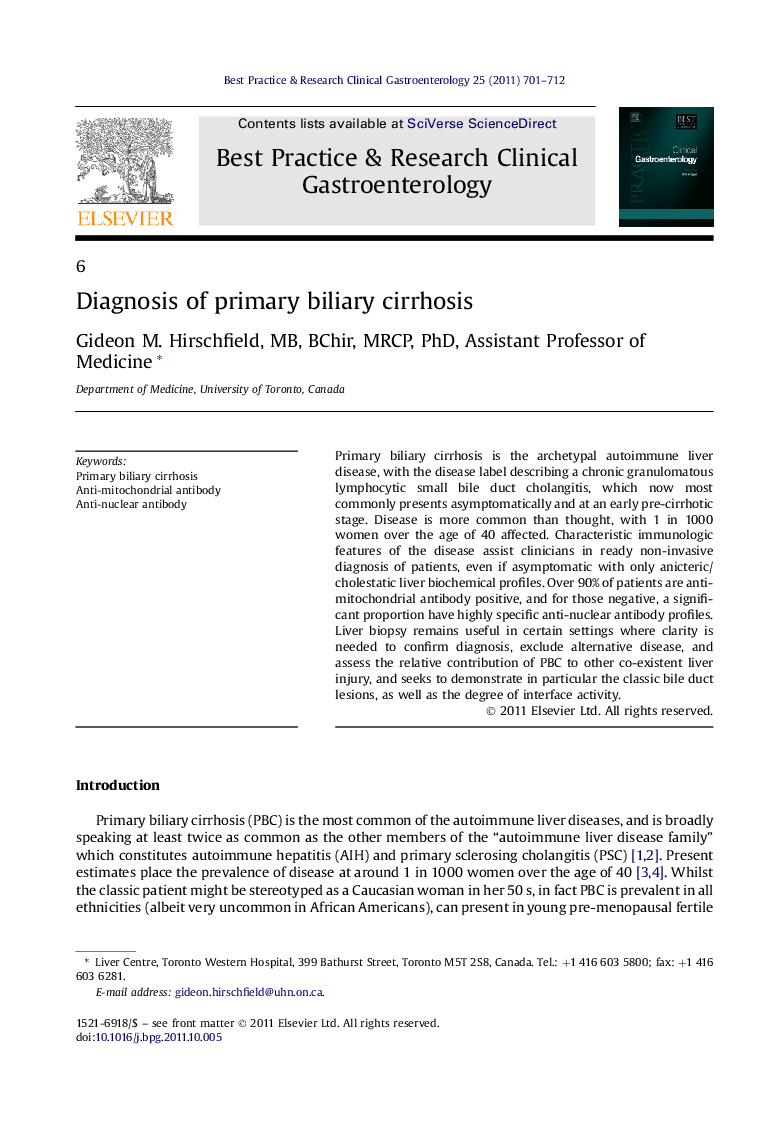| Article ID | Journal | Published Year | Pages | File Type |
|---|---|---|---|---|
| 6086510 | Best Practice & Research Clinical Gastroenterology | 2011 | 12 Pages |
Primary biliary cirrhosis is the archetypal autoimmune liver disease, with the disease label describing a chronic granulomatous lymphocytic small bile duct cholangitis, which now most commonly presents asymptomatically and at an early pre-cirrhotic stage. Disease is more common than thought, with 1 in 1000 women over the age of 40 affected. Characteristic immunologic features of the disease assist clinicians in ready non-invasive diagnosis of patients, even if asymptomatic with only anicteric/cholestatic liver biochemical profiles. Over 90% of patients are anti-mitochondrial antibody positive, and for those negative, a significant proportion have highly specific anti-nuclear antibody profiles. Liver biopsy remains useful in certain settings where clarity is needed to confirm diagnosis, exclude alternative disease, and assess the relative contribution of PBC to other co-existent liver injury, and seeks to demonstrate in particular the classic bile duct lesions, as well as the degree of interface activity.
